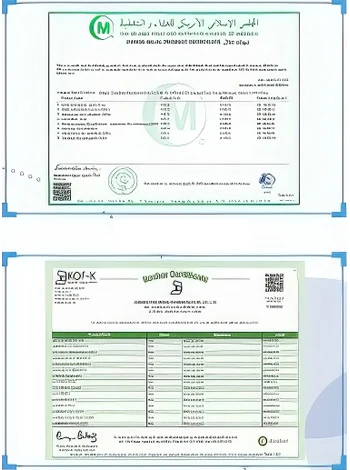



sodium chlorite cas
Understanding Sodium Chlorite A Comprehensive Overview
Sodium chlorite, with the chemical formula NaClO2, is an inorganic compound that has garnered attention for its various applications across multiple fields. This article explores the properties, uses, safety considerations, and regulatory status of sodium chlorite.
Properties of Sodium Chlorite
Sodium chlorite is a white to light yellow crystalline powder that is highly soluble in water. It acts as a powerful oxidizing agent due to the presence of chlorite ions (ClO2-). The compound is stable under normal conditions but can decompose when exposed to strong acids, releasing chlorine dioxide (ClO2), a gas that is an effective bleaching agent and disinfectant. Its molecular weight is 90.44 g/mol, and it has a melting point of approximately 180°C (356°F).
Uses of Sodium Chlorite
1. Water Treatment One of the primary uses of sodium chlorite is in water treatment processes. It is commonly employed as a disinfectant due to its ability to effectively kill bacteria, viruses, and other pathogens. When sodium chlorite is mixed with an acid or in certain conditions, it generates chlorine dioxide, which is more effective in eliminating microorganisms than chlorine.
2. Bleaching Agent Sodium chlorite serves as a bleaching agent in various industries, including textiles, paper, and pulp. Its use in these sectors helps achieve desired white shades without the harmful side effects typically associated with more potent chemicals.
3. Food Industry In food processing, sodium chlorite is utilized for sanitizing equipment and surfaces in order to maintain hygiene and prevent contamination. Its application ensures that the food products are safe for consumption.
4. Medical Applications Some alternative health practitioners have explored sodium chlorite's potential benefits in treating various conditions. However, this application is highly controversial and not scientifically validated.
sodium chlorite cas

5. Industrial Applications Beyond its use in water treatment and sanitation, sodium chlorite finds applications in oil and gas production, leather manufacturing, and in related chemical reactions as an oxidizing agent.
Safety Considerations
Although sodium chlorite has valuable applications, it is essential to handle it with caution. The compound can be hazardous if ingested, inhaled, or allowed to come into contact with skin. Exposure can lead to respiratory issues, skin irritation, and other health problems. Therefore, appropriate personal protective equipment (PPE) should be used when handling sodium chlorite, and it should be stored properly in a cool, dry place away from incompatible substances.
Ingestion of sodium chlorite can lead to severe gastrointestinal damage, while inhalation of its dust may cause respiratory distress. As a robust oxidizing agent, sodium chlorite can react violently in contact with organic materials, leading to fire or explosion hazards. Users must adhere to safety guidelines and regulations to mitigate these risks.
Regulatory Status
The regulatory status of sodium chlorite varies by country. In the United States, the Environmental Protection Agency (EPA) regulates its use in drinking water, while the Food and Drug Administration (FDA) oversees its application in food processing. It's essential to comply with local regulations and guidelines concerning sodium chlorite to ensure safety and legality.
In the context of the European Union, sodium chlorite is classified as a substance of very high concern (SVHC), which denotes that its use is restricted and regulated due to human health and environmental concerns. Manufacturers and users must stay informed about the changes in regulations and ensure compliance with the necessary safety data sheets (SDS) and labeling requirements.
Conclusion
Sodium chlorite is a versatile compound with significant applications in water treatment, bleaching, food sanitation, and more. While it offers numerous benefits, safety must be a top priority when handling this chemical. By adhering to regulations and understanding its properties, users can harness the potential of sodium chlorite while minimizing risks to health and the environment. Continued research and careful application will determine its future role across various industries, ensuring it remains a valuable tool in the ongoing pursuit of safety and efficiency.
-
Why Sodium Persulfate Is Everywhere NowNewsJul.07,2025
-
Why Polyacrylamide Is in High DemandNewsJul.07,2025
-
Understanding Paint Chemicals and Their ApplicationsNewsJul.07,2025
-
Smart Use Of Mining ChemicalsNewsJul.07,2025
-
Practical Uses of Potassium MonopersulfateNewsJul.07,2025
-
Agrochemicals In Real FarmingNewsJul.07,2025
-
Sodium Chlorite Hot UsesNewsJul.01,2025










